by Laura Smith
Ten years ago, in our March 1995 issue, we profiled 45 "New Quality Gurus." Although it was one of our more popular articles, some of the "gurus" and their causes have faded into obscurity. Other gurus chased the latest fads into oblivion. A few have shown remarkable staying power.
When we decided to revisit the quality gurus issue, one thing was immediately apparent: There isn't any one guru who stands out above the rest. In fact, the quality profession is remarkably free of fads at the moment. Six Sigma has settled into the mainstream, and ISO 9001 has become firmly entrenched in Corporate America. So while we wait for the "Next Big Thing," we're also waiting for the next big guru.
This time around we wanted to avoid the guru label, which has a faint hint of hucksterism. Instead, we chose to focus on those individuals who are driving forces in the quality profession, either through their work, their employment, their writings or their visibility.
Are there others who should be on the list? You bet. We just couldn't include everyone. Therefore, presented for your reading pleasure over the next several pages in alphabetical order, are this year's quality drivers.
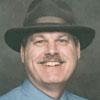
The Audit Guy
DENNIS ARTER
President
Columbia Audit Resources
If you've been to an ASQ conference in the past decade, chances are you've seen Dennis Arter. His trademark hat is only one feature that sets him apart in a crowd. This prolific author, speaker and instructor stands out from his peers due to his sheer knowledge of quality principles, tools and techniques.
Arter is best known for his work with auditing, having helped develop ASQ's Certified Quality Auditor program, authored the bestselling Quality Audits for Improved Performance (ASQ Quality Press, 2003) and trained more than 8,000 people in quality auditing techniques.
Arter traces the roots of ISO 9001 back to Adm. Hyman G. Rickover. "He started everything in the early 1950s, with the development of the Navy nuclear power program," Arter explains. "Rickover understood that the public would not accept this technology unless it was implemented without error. He taught his officers and crew the necessity of attention to detail."
Arter credits Rickover's obsession with details as the seed that grew into ISO 9001. "I suspect that the 'Rickover Way' had a great deal of influence on the development of MIL-Q-9858. We all know that this document begat the 10CFR20, Appendix B, regulations for the civilian nuclear industry, which begat the first ISO 9001 standard in 1987. (Despite what the British might lead you to believe.)"
Regardless of Rickover's attention to detail, Arter sees modern-day quality professionals' obsession with documentation as destructive. "Our profession has gone overboard," he says. "This is a real turnoff to other stakeholders, especially senior managers, who put up with our outrageous demands for signatures and stamps and wordy procedures. Our excessive love of documentation has caused our profession to lose credibility."
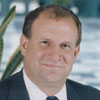
The Man Behind the Curtain
PAUL BORAWSKI
Executive Director
American Society for Quality
The American Society for Quality is the professional organization for the quality industry. Although the organization's elected officials are the public face of ASQ, there's no doubt that Paul Borawski is in charge.
Borawski's nearly 20-year reign at ASQ--he joined the society in 1986 and was appointed executive director in 1988--has been remarkably successful. ASQ's membership swelled to a peak of more than 140,000 and increased its reach both internationally and further into the executive suites. ASQ also increased its revenues significantly.
As executive director, Borawski oversees ASQ's staff of more than 220 and an annual budget in excess of $40 million.
Some criticize Borawski for the ASQ's decline in membership, which recently dipped below 100,000. Others praise his work to keep membership numbers high despite a significant reduction in the number of people in the quality profession. In fact, ASQ (and Borawski) should receive credit for boosting the quality profession. ASQ's recent multimillion-dollar ad campaign in national newspapers and magazines to promote quality awareness is just one example of what the organization is doing to help make quality more visible.
Borawski declined to comment directly for this profile, deferring instead to the rank-and-file ASQ members who make up the organization's heart and soul. "Anything I've learned the past 18 years at ASQ pales in comparison to those who practice quality, have mastered the tools and led the developments in the field," he says. "I'm proud to play a part in their story, and enjoy the view my position provides, but think of myself as the enabler of their vision, certainly not a driver."
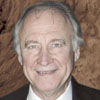
Driving Force
JOSEPH R. BRANSKY
ISO/TS 16949 IATF Representative
General Motors Corp.
Joe Bransky came out of retirement to be General Motors' representative to the ISO/TS 16949 International Automotive Task Force. Since assuming that role, Bransky has been a leader on the task force and a key player in the international standards community. Bransky never fails to keep his eye on the objective: improving the quality of the Big Three's products by improving the quality of suppliers' products. He's keenly aware of the highly competitive nature of the global automotive community and works hard to instill the knowledge and tools suppliers need to survive.
"It's a buyer's market and it's global," he explains. "This means that the customer wins. Organizations will succeed if they have leadership with a fundamental understanding that the total customer owner----ship experience must be integrated into the product or service realization process. Those organizations that fail to grasp this concept will struggle."
Bransky sees an organization's quality management system as providing a common language for quality improvement and learning. "I think it's clear that there are no gimmicks to having a quality management system that works," he says. "This is about effectively managing risks related to achieving product and service satisfaction focused on the customer. Objective assessment is the starting point, followed by defining the strategies and initiatives to achieve the goal. Implementation requires marshalling resources and organization knowledge to get the job done, minimizing complexity and redundancy, and staying on track."
Accrediting Quality
MICHAEL CARMODY
President and CEO
RABQSA International Inc.
As president and CEO of RABQSA International Inc., Michael Carmody is responsible for ensuring the integrity and professionalism of quality auditors. In coming years, he forecasts that auditors will have to prove that they can add tangible value to their client organizations' performance, and that the standards they comply to will evolve to illustrate this.
"Industry will demand competence, not simply qualifications and experience," Carmody says. "Auditors will be required to demonstrate the appropriate knowledge, skill and personal attributes to defined industry standards. Simple compliance-based auditing will remain, though it will most likely be reduced to a commodity-based service."
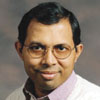
The Ice Cream Maker
SUBIR CHOWDHURY
President and CEO
ASI Consulting Group
As a consultant, Subir Chowdhury travels the world, but he sees the same problems everywhere he goes: ineffective, compartmentalized quality efforts. It's his mission to teach organizations that to be successful, quality must be the mission of each and every employee, and that means making all employees quality technicians in their own right.
"Even in organizations where quality is supposedly driven deep into the culture, there is a sense that quality is the responsibility of the quality department," Chowdhury laments. "That's not right. If there's a problem with a product or service, the CEO shouldn't hammer the quality department. He should look at the design, the delivery, the entire method of delivering that item to the customer. That's where the problem will be."
Chowdhury's latest book, The Ice Cream Maker (Currency Doubleday, 2005) is being published this month and has already received rave reviews. You can read an excerpt from The Ice Cream Maker on page 39 of this issue.
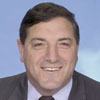
Juran Man
JOSEPH DE FEO
President and CEO
Juran Institute
As president and CEO of the Juran Institute, Joe De Feo has some big shoes to fill (or, to use the appropriate Juran lingo, a big bowtie to wear). De Feo is responsible for running the namesake organization for the man who is considered to be one of the most influential quality thinkers of our time.
De Feo wears the bowtie well. He's a prolific writer, speaker and consultant who logs hundreds of thousands of miles each year visiting clients around the world to spread Juran's (and his own) quality gospel.
De Feo believes that organizations need to focus on two tools to improve quality: the Pareto principle and the cost of poor quality (COPQ). "The Pareto principle gets us to focus on the vital few (customer needs, problems, variables, etc.) and separate that from the useful many," he explains. "The COPQ places the quality profession where it needs to be in the waste reduction and quality improvement arena. Too many quality professionals are trying to be cost cutters and don't understand the importance of focusing on the costs of poor quality first."
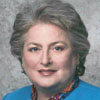
TRIZ Tsarina
ELLEN DOMB
President
PGR Group
TRIZ (a Russian acronym for Theory of Inventive Problem Solving) may not be as well known as Six Sigma, lean or quality function deployment, but increasing numbers of quality professionals are realizing that TRIZ is a powerful tool for merging quality components into "super" systems capable of managing large-scale operations. Ellen Domb has spent much of the past decade showing people how to integrate the TRIZ method of creativity and innovation into their quality applications. Domb is president of the PGR Group, and is also a charter member of the Quality Function Deployment Institute, co-founder of the TRIZ Institute and editor of The TRIZ Journal.
Domb reports that the integration of different quality systems will accelerate during the next five years, requiring the diligent attention of experienced quality professionals who can shape the evolving systems.
"We've seen quality grow from the detection of defects in manufacturing to quality assurance, and to quality improvement in services, manufacturing and the public sector," Domb says. "As these super-systems evolve, quality professionals will play strong and significant roles, applying their knowledge of measurement, evaluation and improvement at all levels and in all businesses."
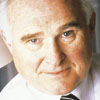
The Everywhere Man
H. JAMES HARRINGTON
Chairman of the Board
The Harrington Institute Inc.
A list of quality drivers just wouldn't be complete without the inclusion of H. James Harrington, one of the quality industry's most well-known consultants, authors and thinkers. Harrington is now chairman of the board at The Harrington Institute, but he holds positions with many other notable organizations, too: president of the Walter L. Hurd Foundation, U.S. chairman on technologies for project management at the University of Quebec and chairman of the advisory board for the e-TQM College in Dubai.
Harrington, who writes a monthly column for Quality Digest, is recognized as a world leader in applying performance improvement methodologies to business processes. He has authored 22 books, 10 software packages and hundreds of technical reports.
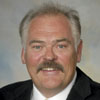
The Father of Six Sigma
MIKEL HARRY
Chairman and CEO
Six Sigma Management Institute
Mikel Harry, along with engineer Bill Smith, developed Six Sigma during the early 1980s at Motorola. Since then, Harry has become one of the industry's premier speakers, authors and thinkers. He founded the Six Sigma Academy in 1994, and now serves as chairman and CEO of the Six Sigma Management Institute. Harry has personally trained and worked with some of the world's top businesspeople: Jack Welch of General Electric, Jacques Nasser of Ford Motor Co. and Larry Bossidy of AlliedSignal, along with their respective senior executive teams.
Harry acknowledges that Six Sigma has evolved since its inception, which has been a mixed blessing. On the one hand, its evolution has been at the behest of natural market forces, but with that comes the tendency to dilute Six Sigma's power and effectiveness. In recent years, Harry has worked to make Six Sigma relevant to current market forces in several ways: with the development of Six Sigma Generation III, which focuses the methodology from defect reduction to value creation; in the development of IRCA--innovate, realize, configure, attenuate--a new methodology that shapes ideas into market-ready products or services; and through a partnership with Arizona State University to provide low-cost online Green Belt training.
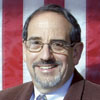
Baldrige Booster
HARRY HERTZ
Director
Baldrige National Quality Program
As director of the Baldrige National Quality Program, Harry Hertz oversees an award program that casts a long shadow over the quality industry. Winning a Baldrige Award is a major feather in the hat for any organization, and administering the program is no small feat. The program receives 60 Baldrige Award applications each year, and its affiliated quality awards at the state level receive another 500 applications.
Hertz is a chemist by training and started his career as a bench chemist before moving into management. He's been director of the Baldrige National Quality Program since 1996 and has always emphasized the importance of measuring performance to improve quality.
"The main thing organizations can do to improve their own quality is to move their quality efforts from a tactical perspective to a strategic opportunity," he says. "It has to be part of the mission of the organization."
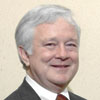
Integrity Vendor
ROBERT H. KING, JR.
President and CEO
ANAB
As president and CEO of the ANSI-ASQ National Accreditation Board (ANAB), it's Robert H. King, Jr.'s job to ensure that ANAB-accredited programs meet regulatory requirements and standards. It's a complicated task with an international focus that demands careful attention to detail. King has a long and distinguished professional history: before becoming president of the Registrar Accreditation Board (ANAB's precursor) in 2002, King was Bayer Corp.'s vice president for the NAFTA supply chain. Prior to joining Bayer in 1985, he worked for Dow Chemical. King served as a captain in military intelligence in the U.S. Army and holds a bachelor's degree in international studies.
He's previously said that ANAB's most valuable capability is its ability to legitimize programs registered to ISO 9001 and other standards through accreditation.
"The only thing I have to sell is integrity," he says. "My mission is to uphold the integrity of the accreditation and registration processes and ensure there's a balanced, ethical approach to the business."
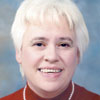
Corrective Action Queen
DENISE E. ROBITAILLE
President
Robitaille Associates
Denise Robitaille is quickly becoming known as the "Corrective Action Queen." Her bestselling book, The Corrective Action Handbook (Paton Press, 2001), along with others on preventive action, management review, root cause analysis and document control, has made her the go-to gal for quality tools. Robitaille's special knack is for making seemingly complex principles such as corrective action and root cause analysis not just understandable but usable by almost anyone.
Robitaille sees quality management systems not from the lofty perch of senior executive offices or the hallowed halls of ISO but from the guy or gal in the trenches who's responsible for getting product out the door.
Robitaille sees ISO 9001 as the great equalizer. "I think that the proliferation of ISO 9001 has brought quality management into the mainstream and created more parity in the marketplace," she says. "It's one of the few models that works equally well for a three-man machine shop and a 10,000-person service organization."
Robitaille sees a migration within the ranks of quality professionals. "Quality professionals need to migrate their roles from owners of the quality system to champions, mentors and coaches," she advises. "They need to teach others the tools and become facilitators and managers of the quality processes and initiatives... not the sole proprietors of an isolated institution within a company."
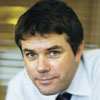
Metrology Mogul
Ola Rollén
President and CEO
Hexagon AG
When he became president and CEO of Hexagon AG in 2000, Ola Rollén grabbed the reins and cracked the whip, driving the sleepy Swedish conglomerate into a leading player in the metrology market. He's overseen the acquisition of several major metrology companies: Brown & Sharpe in 2001, Quality Ltd. and CE Johansson in 2002, ROMER CimCore Inc. and Sheffield Measurement Inc. in 2004, and Starrett's CMM business earlier this year. Hexagon is currently attempting to acquire Leica Geosystems.
Rollén's goal for Hexagon over the next decade is to spread the use of Hexagon dimensional metrology software, a task that shouldn't be difficult given its grasp on PC-DMIS software and ROMER CimCore's widely used articulating arm technology.
"Companies must make more meaningful use of the metrology data that are being collected--going beyond merely determining if one part in isolation is good or bad," Rollén says. "Instead, companies need to begin closing the loop between design and manufacture of a product by capturing the dimensional design intent electronically, following the product throughout manufacture, until we have a finished product that we can compare to the original design intent in an entirely paperless way."
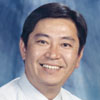
Son of Quality
SHIN TAGUCHI
President and Senior Consultant
ASI Consulting Group LLC
As the son of the legendary quality thinker Genichi Taguchi, Shin Taguchi certainly has the pedigree of a quality guru. But he's also done the hard work to earn the honor: As a consultant and president of ASI Consulting Group, he's one of the quality industry's most sought-after professionals. His client list is a roster of industry heavy-hitters: General Motors Corp., Hyundai Motor Co., Ford Motor Co., Kodak, Texas Instruments Inc. and Lexmark International Inc. Over the years, he's trained more than 25,000 engineers worldwide in quality engineering, product and process optimization, and his father's renowned Taguchi methods.
Taguchi is a disciple of robust engineering, the practice of designing products to avoid future quality problems. He believes that the quality goal of companies should be to solve quality problems before they're created. "Firefighting" quality flaws through post-production inspection is useless.
"The goal for best-in-class companies is to design processes and products to be trouble-free, even when the concept contains new technology," Taguchi says. "This will lead to pure prevention. I see many companies that are very good at improving unoptimized design by firefighting and problem solving. In this way, they reduce short-term quality costs. The question is, how many companies are really good at preventing reoccurrences of the same or similar problems?"
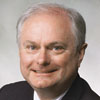
Mr. ISO 9000
JOHN E. (JACK) WEST
Chairman
U.S. TAG to ISO/TC 176
Jack West's position as the chair of the U.S. TAG to ISO/TC 176, the technical committee responsible for the ISO 9000 family of quality management standards, often puts him in a unique position. He's both "a defender of the faith" and recipient of the wrath of those unhappy with ISO 9001. Those who know West are well aware of his deep knowledge of quality principles and tools, his real-world business experience, and his encyclopedic knowledge of the standards world and the inner workings of ISO. Add West's no-nonsense demeanor, tempered with a dash of Southern charm, and you've got one very powerful figure.
West is the public face of ISO in America, at least to the quality community, and a driving force behind the latest revision to the standard (and presumably the next, even though his tenure as chair ends soon). As such, it's understandable that West is a champion of ISO 9001, seeing the standard as having had a tremendous effect on the quality profession.
"ISO 9001 has provided a stable platform for organizations to develop a quality system and sustain it over time," he says. "Most other basic systems haven't had that staying power."
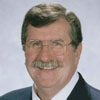
Deming Disciple
DONALD J. WHEELER
Consultant Statistician
SPC Press
Donald J. Wheeler is perhaps the most highly respected, well-regarded statistician in the quality profession. This former university professor-turned-consultant commands unparalleled respect from both his peers and the boardroom.
Although he worked closely with W. Edwards Deming, Wheeler has managed to step out of the great man's shadow and build successful consulting and publishing businesses, a feat few other Deming disciples managed. His books are used in countless colleges, universities and businesses to help
teach statistical process control, the backbone of modern quality control.
Wheeler credits Walter Shewhart and Deming as having the most lasting effect on the quality profession. "How do you compare the contributions of those alive today with the contribution of Dr. Shewhart, who created the discipline of data analysis and first applied statistical techniques to quality control?" he asks. "Or how do you compare them with the contribution of Dr. Deming, who effectively promoted Shewhart's ideas into a unified approach to quality? While many of us have made contributions, we are merely standing on the shoulders of these giants."
Laura Smith is Quality Digest's assistant editor. QD
|